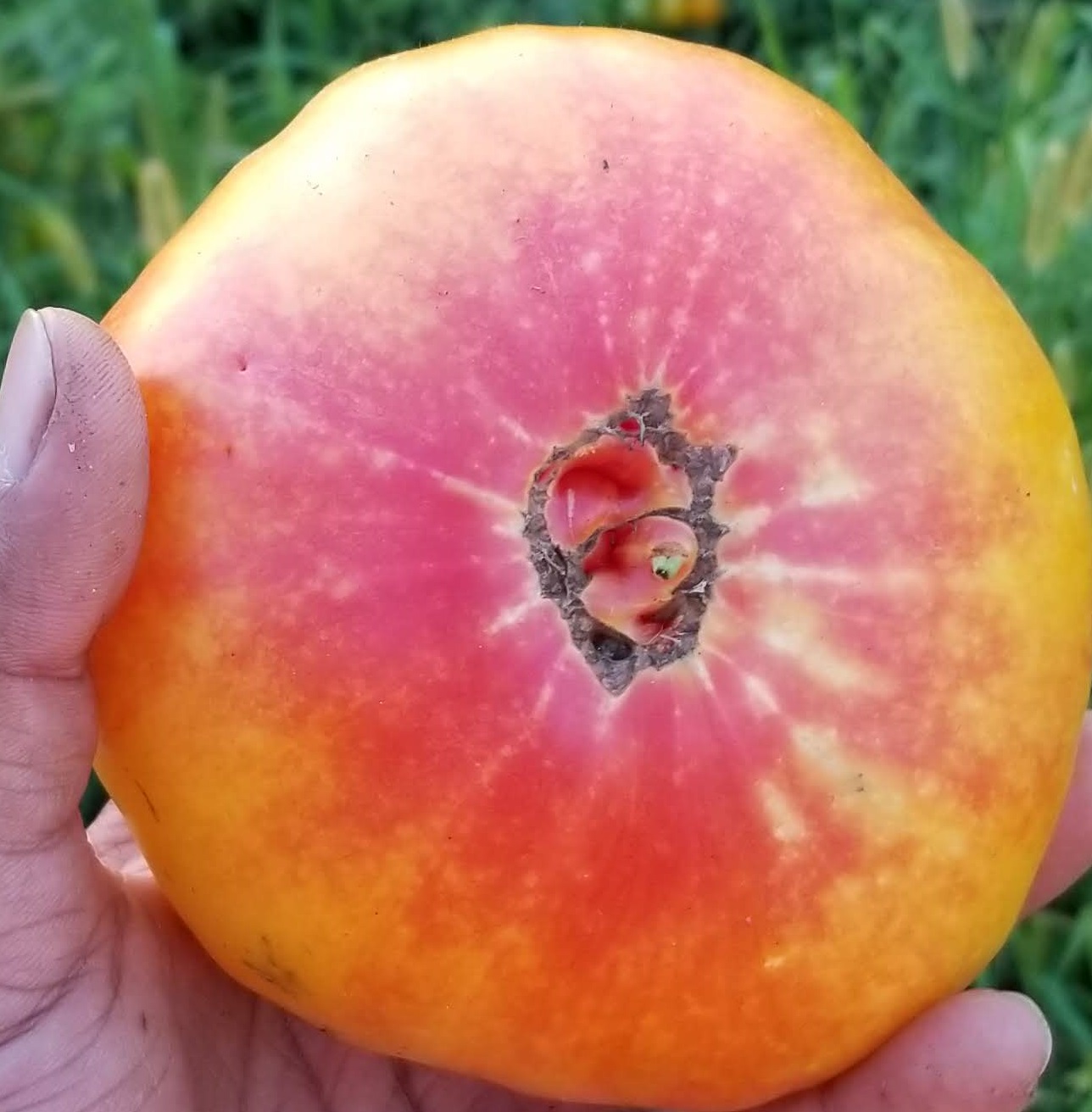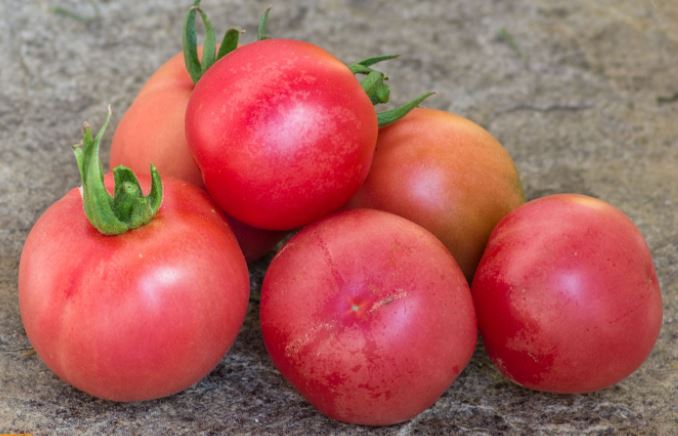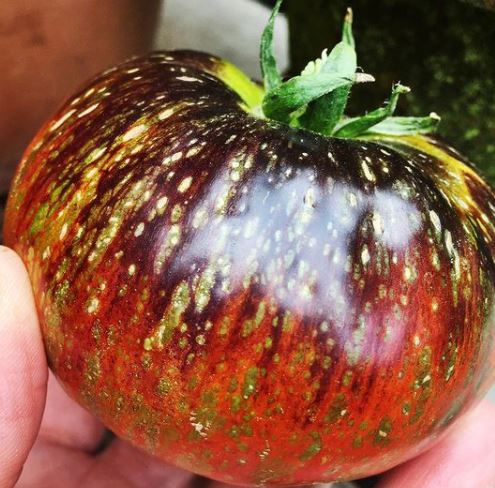
You may have noticed the amazing diversity in tomato colour. And if you haven’t then welcome to the wonderful rainbow that is tomato. It is a beautiful kaleidoscope of colour, form, taste, growth habit, leaf pattern and more. This blog post will focus purely on colour but in this series we will be discussing other neat tomato differences.
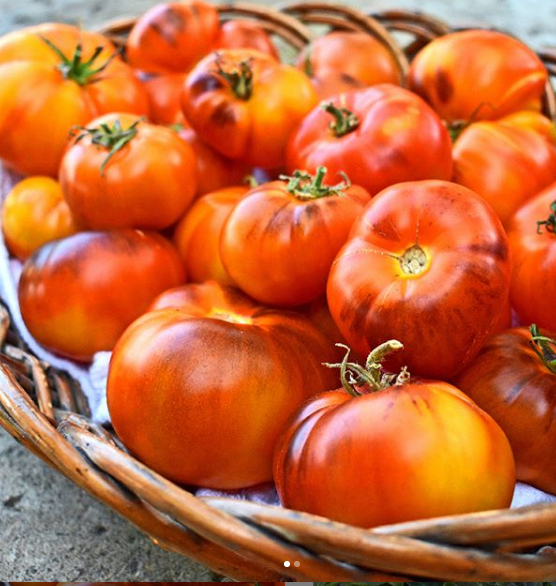
I won’t go into the specific genes (or great detail) but if you are interested, here is a great article by Frogsleap Farm putting them all together so you can learn more.
From what I’ve read, there are (broadly) two parts of the tomato fruit that affect colour and these are the skin and the flesh. An unripe tomato is green from chlorophyll – that stuff we associate with sunlight being converted into sugar as per plant biology. The green of the chlorophyll disappears mostly as the fruit ripens and carotenoids develop/become visible. If the word carotenoid reminded you of carrot then it was for good reason as this is a group of pigments that are yellow-orange-red.
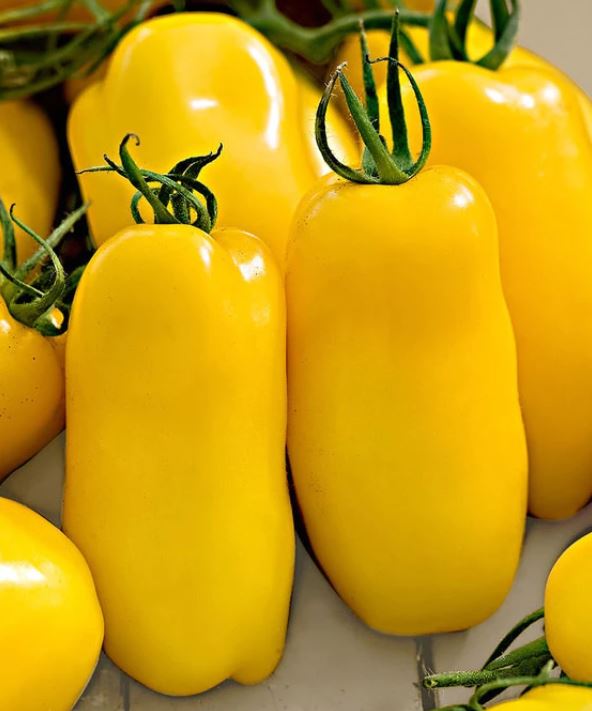
There is one other colour you may have started to see recently in tomato varieties and this is blue/black skin. This also develops in some varieties of unripe tomatoes as they are exposed to sunlight producing anthocyanin. Therefore just because your tomato changed colour on the skin to blue/black doesn’t mean they are ripe until the flesh colour has developed. This is a common question I get about “Is my blue/black tomato ripe yet? It doesn’t taste ripe.” And they’re right! Normally it’ll need to be red/yellow/orange in flesh colour along with those pretty blue shoulders.
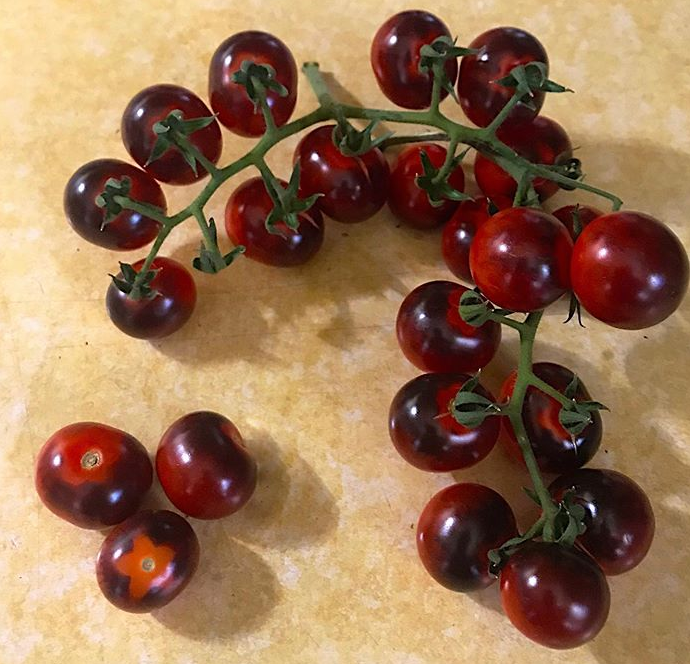
The skin can also be striped with darker green pigments which can either remain green or convert to a more yellow leading to stripy, swirly tomatoes. (To learn about gold flecks/freckles such as in dark galaxy, see the above link. It was a bit of a genetic mystery the first time I saw it in a volunteer tomato cross in my field)

Flesh colour can express different carotenoids – yellow, red, orange – and different combinations of these will yield different overall appearance and even flavour profiles. Flesh colour can also appear green when ripe as the chlorophyll doesn’t break down or does so more slowly making. If this is in combination with a red colour then the overall appearance is more purple or chocolate brown. Green plus yellow flesh leads to typically to a green looking ripe tomato with a yellowish caste that is tender to the touch. With green when ripe tomatoes, I always recommend the gentle squish test to make sure it’s ready.
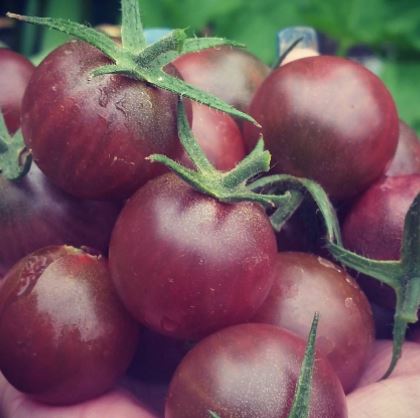
Purely yellow flesh signals a lack of lycopene, which normally gives tomatoes the red colour, and a variation dubbed tangerine is the expression of another carotenoid variant that gives most orange tomatoes their colour. There is also mottled or mixed expression of carotenoids that make flesh bicolour

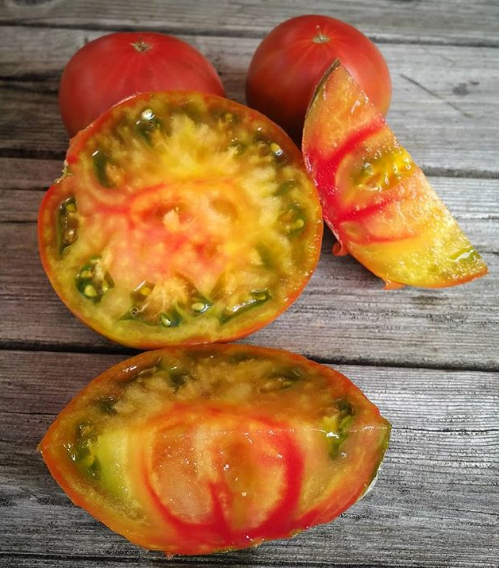
See if you can reason what skin and flesh colours are being expressed in these fabulous varieties:


